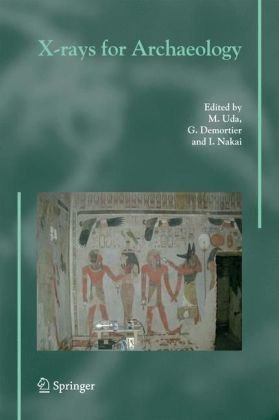

Most ebook files are in PDF format, so you can easily read them using various software such as Foxit Reader or directly on the Google Chrome browser.
Some ebook files are released by publishers in other formats such as .awz, .mobi, .epub, .fb2, etc. You may need to install specific software to read these formats on mobile/PC, such as Calibre.
Please read the tutorial at this link: https://ebookbell.com/faq
We offer FREE conversion to the popular formats you request; however, this may take some time. Therefore, right after payment, please email us, and we will try to provide the service as quickly as possible.
For some exceptional file formats or broken links (if any), please refrain from opening any disputes. Instead, email us first, and we will try to assist within a maximum of 6 hours.
EbookBell Team

0.0
0 reviewsThe application of X-rays to objects of archaeology and the attempt to gain insight into both construction and chemical composition in a non-destructive manner date back to the days of the discovery of radiation. Nowadays, X-ray techniques, such as X-ray fluorescence and diffraction are standard tools.
The book contains scientific data, i.e. in situ measurement data taken with portable XRF and XRD, and fine data taken with accelerating ion beams and synchrotron radiations, and with their explanation. Results obtained by traditional scientific methods are also reviewed. The book contains experimental data taken both from monuments in the field and exhibits in museums, i.e. ancient Egyptian wall painting pigments, ancient Egyptian wooden statues, ancient Egyptian mummies, ancient Greek funerary monuments, Cypriot ceramics, Medieval, Lyubliana and Venetian glass, Romanian ceramics, ancient Near East clay, old Japanese porcelain, pre-Hispanic items from ancient America, ancient Chinese underglaze-red, blue and white porcelain, Chinese celadon, Phoenician cosmetics, glazes, ancient gold and silver coins, gold jewelleries, gold alloys, corroded metals, gemstones (ruby, emerald and garnet), painting pigments, pottery, bronze, obsidian, stucco, turquoise, and so on. This discussion between natural scientists and archaeologists predicts the future direction of archaeology.